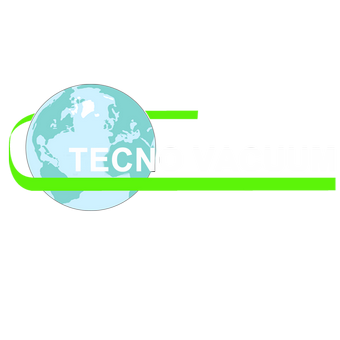Technologies
Vacuum deposition technologies have some unique characteristics in the field of surface coating techniques.
They allow you to deposit a wide range of materials, which includes not only metals and alloys, but also oxides and ceramic materials.
Vacuum deposition technologies are completely ecological as they do not produce fumes or liquids to be disposed of, making them a valid alternative to galvanic processes.
Unlike galvanic where hexavalent chromium is used, chromium plating performed with Tecno Vacuum Sputtering systems does not present any risk to health and the environment, as "zerovalent" chromium is deposited.
With these technologies it is also possible to coat a wide range of substrates such as: plastics of various types, glass, metals and many others.
The high automation of Tecno Vacuum systems makes their use easy and safe, even for unskilled personnel.
The aid of a Robot for loading and unloading (of satellites / bars / pieces) allows the fully automatic operation of the system, without the need for an operator.
Our systems can be equipped with the Cryogenic System for freezing humidity, allowing to stabilize and significantly reduce cycle times.
Vacuum deposition technologies are divided into two large families, called CVD (Chemical Vapor Deposition) and PVD (Physical Vapor Deposition).
CVD technologies achieve the coating by chemically dissociating gases or vapors, while in PVD techniques the vapors are obtained by physical means.
Examples of PVD technologies include Thermal Evaporation and Sputtering.
Among the CVD techniques, the PECVD (Plasma Enhanced CVD) technique deserves mention, in which the dissociation is obtained by lighting an electric discharge (a plasma) in a suitable low-pressure gas mixture.
With THERMAL EVAPORATION the material to be deposited is placed in a crucible which is heated by passing a high electric current (Joule effect).
The material evaporates and the vapors condense on the pieces, creating the coating.
If the material is available in wire (e.g. aluminum), instead of crucibles, spiral resistances can be used, inside which a piece of wire is placed.
Thermal evaporation is one of the least expensive PVD technologies and allows to reach very high deposition rates.
On the other hand, materials that melt at high temperatures (eg oxides and ceramics) cannot be deposited and the deposition is more complex for highly melting metals (eg chromium, titanium).
The thicknesses are limited by the capacity of the crucibles (or spirals) and are generally between 0.1 and 0.5 microns.
Thermal evaporation does not cause an increase in the temperature of the pieces to be coated and therefore lends itself very well to deposition on plastic materials.
Most of the applications of thermal evaporation with spirals concern the deposition of aluminum, particularly in the automotive (e.g. lighting systems), cosmetic packaging, lighting and decorative sectors.
At the end of the thermal evaporation cycle it is possible to paint the metallized pieces to obtain any desired colour.
With the use of suitable crucibles, it is possible to deposit various types of inorganic compounds to obtain the Rainbow Effect (iridescent effect).
The SPUTTERING technology consists in lighting an electric discharge between a slab of material to be deposited (target) and the walls of the chamber.
The ions in the discharge erode the material generating the vapors needed to obtain the coating.
Erosion takes place for any conductive material, even high-melting ones, and therefore the range of obtainable coatings is very vast.
In particular, any metal (e.g. chromium, titanium, zirconium, stainless steel), metal alloys (e.g. brass), ceramics (e.g. TiN, SiO2) and even graphite can be deposited.
Excellent deposition rates can also be obtained for ceramic materials thanks to reactive deposition, in which the metal is eroded in the presence of suitable process gases.
A typical example is the deposition of titanium nitride (TiN), a ceramic with excellent wear resistance properties, obtained using a titanium plate eroded in an Argon and Nitrogen atmosphere.
With Sputtering it is possible to deposit several metals at the same time, thus obtaining a vast range of colours.
High thicknesses (even several microns) can be deposited as the reserve of material guaranteed by the slab is very large, but also low thicknesses to obtain different degrees of transparency.
The high stability of sputtering guarantees excellent reproducibility of the colors and thicknesses obtained.
Sputtering does not cause an increase in the temperature of the pieces to be coated and therefore allows the deposition on plastic materials.
.
.
Plasma Cleaning is the surface modification phase of the substrates which allows to increase the adhesion between the surfaces to be coated and the subsequently deposited metal film.
Plasma is obtained in a vacuum chamber through the introduction of a gas (Oxygen, Nitrogen, Argon) and its activation by means of an ionic discharge generated by suitable Direct Current or Medium Frequency power supplies (in the most modern systems).
PECVD (plasma enhanced chemical vapor deposition) is used, for example, in the automotive lighting sector, to deposit water-repellent layers on top of the reflective aluminum film, to protect it from damage caused by corrosion and atmospheric agents, guaranteeing high durability over time.
The deposition takes place by introducing vapors of compounds (e.g. HMDSO) into the process chamber in a controlled way and dissociating the molecules by means of an electric discharge (Plasma).
.
.
